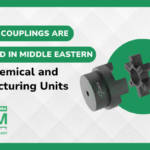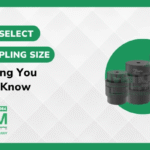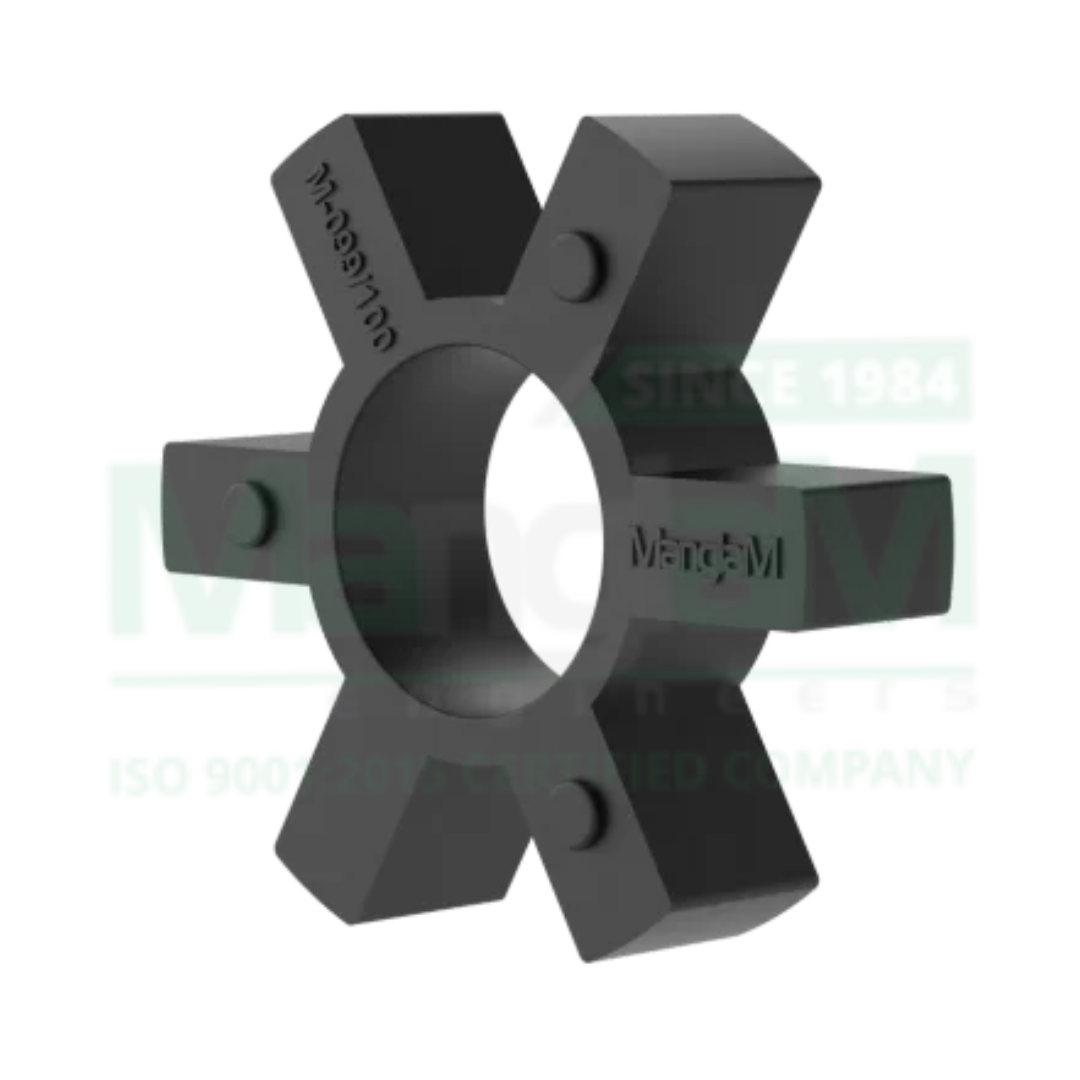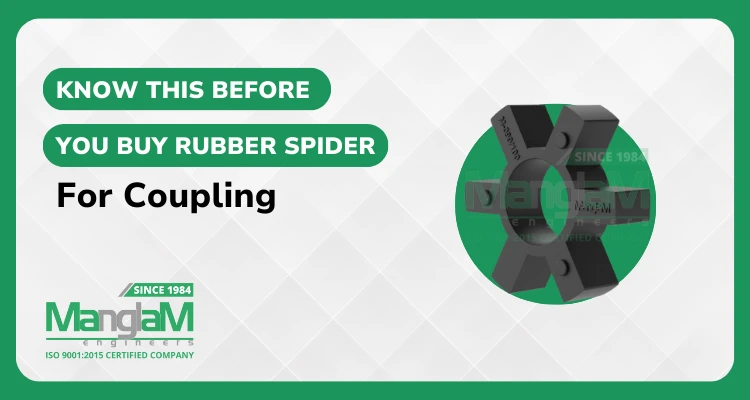
Why Jaw Couplings Are Preferred in Middle Eastern Petrochemical and Manufacturing Units
August 26, 2025
How To Select Jaw Coupling Size – Everything You Need to Know
September 15, 2025Introduction
In the world of industrial machinery, the biggest failures often start with the smallest components. A rubber spider for coupling is a perfect example—a small, often overlooked insert that plays a huge role in power transmission. Choosing the wrong one, or not getting to replace a worn one, can lead to costly downtime, equipment damage, and operational headaches.
This guide explains everything you need to know. As a leading manufacturer and supplier of industrial couplings, we at Manglam Engineers have seen actual how the right rubber spider can make all the difference. We’ll cover what it is, why material selection is important, how to choose the right one for your application, and when it’s time for a replacement.
What Exactly Is a Rubber Spider for a Coupling?
A rubber spider is a flexible nylon insert used in certain types of couplings, most commonly Jaw Couplings. Think of it as the crucial "cushion" or "shock absorber" that sits between the two metal hubs (jaws) of the coupling. Its primary job is to transmit torque between the driving and driven shafts while accommodating minor misalignments and damping vibrations.
Without this simple component, the metal jaws would grind against each other, causing a complete failure. The coupling rubber spider allows for a soft, backlash-free power transmission, protecting expensive machinery like motors, pumps, and gearboxes from shock loads.
Why Is Choosing the Right Flexible Coupling Spider So Important?
Choosing the right flexible coupling spider is not just about fit; it's about performance, safety, and longevity. The correct insert acts as the first line of defense for your entire mechanical system. An incorrect choice can block the very benefits you seek from a flexible coupling.
Here’s why it matters so much:
- Shock Absorption: The spider absorbs sudden spikes in torque and shock loads, preventing them from being transferred to more sensitive components. This is important in applications with frequent starts and stops.
- Vibration Damping: It heavily reduces operational noise and harmonic vibrations, leading to smoother, quieter operation and less wear and tear on bearings and other parts.
- Misalignment Compensation: No system is perfectly aligned. The spider allows for slight parallel, angular, and axial misalignment, reducing stress on shafts and bearings.
- Failure Protection: In the event of a severe overload, the rubber spider is designed to be the "sacrificial" element. It will fail first, protecting the much more expensive motor and machinery connected to it.
- Increased Equipment Lifespan: By removing shock, vibration, and stress, a high-quality industrial coupling rubber insert directly contributes to a longer, more reliable service life for your entire setup.
Ignoring the spider's condition or using a low-quality substitute is a direct path to premature equipment failure and unplanned, expensive maintenance.

What Are Rubber Spiders Made From? (A Material Comparison)
The material of your rubber spider coupling insert shapes its performance characteristics, including its torque capacity, temperature resistance, and chemical compatibility. Understanding these differences is key to selecting the perfect match for your operational environment.
Here is a detailed description of the most common materials used for coupling spiders:
| Material | Hardness (Shore) | Temperature Range | Key Characteristics | Best For |
|---|---|---|---|---|
| Nitrile (NBR) | 80 Shore A | -40°C to 100°C | Excellent oil & fuel resistance, good damping. The industry standard. | General-purpose industrial applications, hydraulic systems. |
| Polyurethane (PU) | 90–95 Shore A | -35°C to 95°C | Higher torque capacity than NBR, superior wear and tear resistance. | High-torque applications, pumps, and systems requiring more precision. |
| Neoprene | 60–90 Shore A | -40°C to 120°C | Good chemical, oil, and weather resistance, moderate wear and tear, flexible over a wide temperature range. | Seals, gaskets, hoses, belts, and applications exposed to oils, weather, or moderate mechanical stress. |
At Manglam Engineers, we help our clients make these choices. For most standard industrial machinery, NBR is a reliable and cost-effective solution. However, for more demanding applications, upgrading to Urethane or Hytrel® can provide a significant raise in performance and reliability.
How Do I Choose the Right Rubber Spider for My Application?
Selecting the right rubber spider for couplings involves more than just matching sizes. You need to consider the specific demands of your system to ensure optimal performance and avoid premature failure. A systematic approach is best.
Here are the key factors to look at before making a purchase:
- Torque Requirements: What is the nominal and maximum torque your application will experience? A harder material like Urethane offers a higher torque rating than NBR but provides less damping. Always check the manufacturer's torque specifications.
- Operating Speed (RPM): High-speed applications generate more heat and require a material that can handle higher temperatures and centrifugal forces without degrading.
- Shaft Misalignment: How much angular, parallel, or axial misalignment do you anticipate? Softer spiders (like NBR) are generally more forgiving of misalignment than harder, high-torque inserts.
- Environmental Conditions: Consider the operating environment. Will the spider be exposed to oils, chemicals, solvents, or extreme temperatures? This will immediately narrow down your material choices. NBR is great for oil, while Hytrel® operates in a broader range of chemicals and temperatures.
- Damping Requirements: Is your primary goal to absorb shock and reduce vibration? If so, a softer durometer spider is the ideal choice. For applications where precise motion control is more critical than damping, a harder spider is preferable.
If you're unsure which parameters are most critical for your needs, it's a good idea to consult with an expert.
When Should I Perform a Rubber Spider Replacement?
Even the most durable coupling inserts are wear items and require periodic inspection and replacement. Being proactive about rubber spider replacement is a simple and inexpensive form of preventative maintenance that can save you a fortune in avoided repairs.
Look for these clear signs that your rubber spider needs to be replaced:
- Visible Cracks or Slits: Any visible cracking, especially around the "legs" or lobes of the spider, is an immediate red flag.
- Deformation or "Squashing": If the spider appears slender or permanently compressed, it has lost its elasticity and is no longer providing effective damping.
- Increased Noise or Vibration: If your machine has become noticeably louder or vibrates more than usual, a failing spider is a likely issue.
- Excessive Backlash: If you can easily twist the shafts back and forth by hand (known as "play" or backlash), the spider has worn down and is no longer providing a tight fit.
- Material Degradation: Depending on the environment, the material might become hard and weak or soft and gummy to the touch. Both are signs that the elastomer has broken down and needs immediate replacement.
A regular visual inspection during routine maintenance can help you catch these issues before they cause a full-scale failure.
Manglam Engineers: Your Trusted Rubber Spider Manufacturer and Supplier
Choosing the right partner is just as important as choosing the right part. As a leading rubber spider manufacturer and supplier, Manglam Engineers provides not only high-quality components but also the expertise to ensure you get the perfect fit for your application. We understand the critical role these parts play in power transmission coupling systems across various industries.
While the rubber spider is the heart of a Jaw Coupling, we recognize that every industrial challenge is unique. That’s why we offer one of the most complete ranges of coupling solutions in the industry, including:
- Tyre Couplings: For excellent shock absorption and misalignment capabilities.
- Pin Bush Type Couplings: A simple, robust solution for general engineering.
- Rotex Type Couplings: Another popular jaw-type coupling known for its reliability.
- HRC Type Couplings, Chain Couplings, GR Couplings, and more.
Our goal is to be your one-stop solution for all mechanical power transmission needs, providing durable, reliable components that keep your operations running smoothly.
Conclusion: Don't Underestimate This Small but Huge Component
The rubber spider for coupling is a testament to the idea that even the smallest parts can have the biggest impact. It's an engineered component designed to protect your valuable assets, improve performance, and ensure operational safety. By understanding the different materials, selecting the right insert for your application, and following a proactive replacement schedule, you can ensure your machinery operates at peak efficiency and reliability.
Ready to enhance your equipment's performance with the right coupling solution? The team at Manglam Engineers is here to provide top-quality products and expert guidance according to your specific needs.
Get a competitive, no-obligation quote for your rubber spider and industrial coupling requirements. [Request a Quote Today!]

